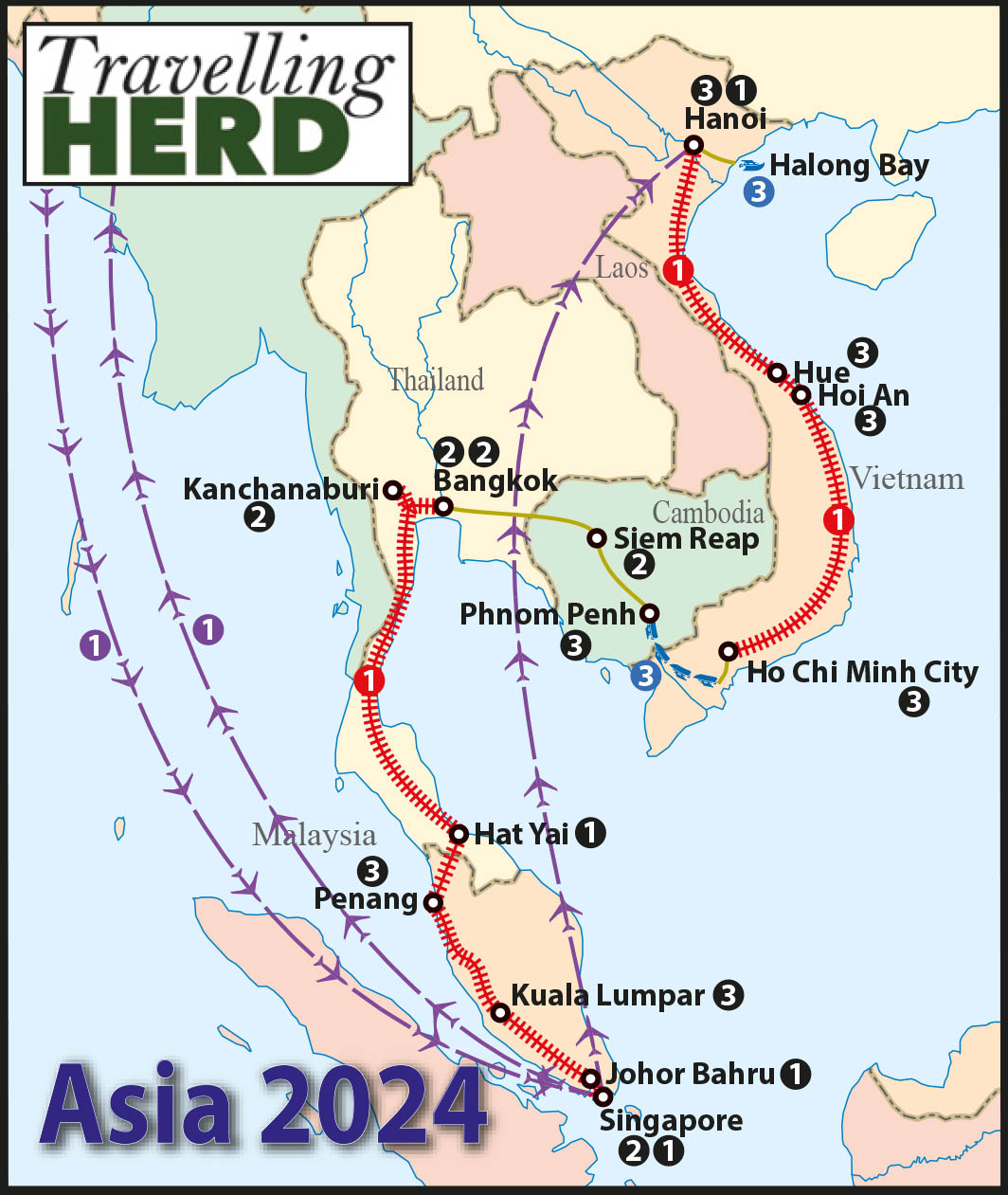Read this blog: The one where Robert’s navigations skills are affected by the heat
Thursday 14th and Friday 15th March 2024
Having deposited our luggage at the hotel we walked to perhaps the most important historical site in the city: the Citadel or Kinh thành. This was the imperial capital of Vietnam during the rule of the Nguyễn Dynasty between 1802 and 1945. Work started in 1803 at the behest of Emperor Gia Long.
This is urban planning at its most regal: not the slow organic growth of a town but a complete capital city with fortifications all at once.
The 10 km long outer walls enclosed palaces for the imperial household, shrines as well as gardens and villas for the mandarins – the educated administrative class. The moat is fed with water from the Hương River also known as the Perfume River via a system of sluice gates.

We entered through Cua Ngo Mon [Noon Gate or Meridian Gate] which was built by emperor Gia Long‘s successor Minh Mang. Even though Minh Mang announced the completion of the Kinh Thành citadel in 1832 he swiftly embarked on his own improvements and he had the impressive U-shaped Ngu Phung [Five Phoenixes] Pavilion and the Cua Ngo Mon [Noon Gate] created to replace the previous gateway [See Selfie of the day].
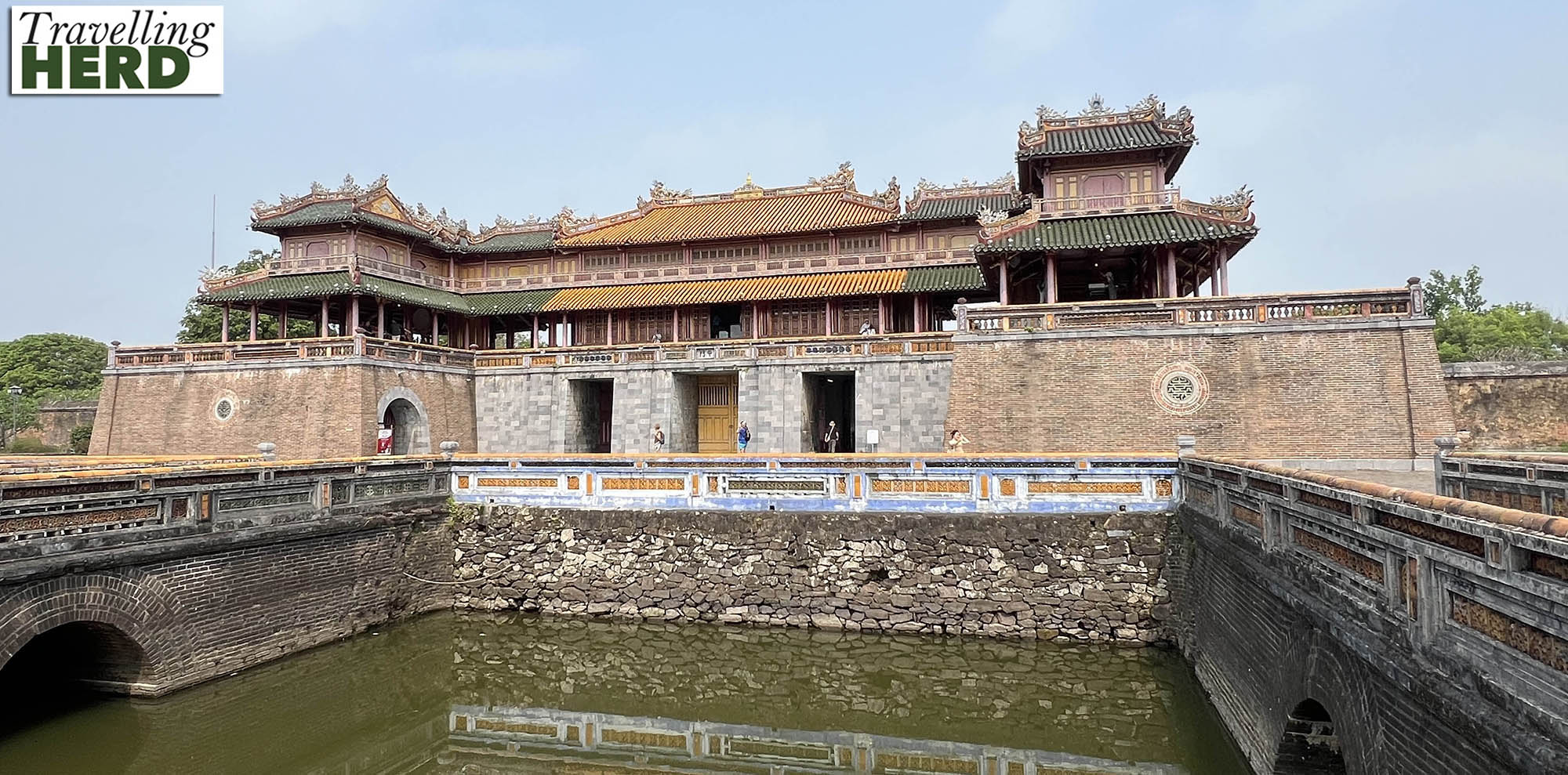
Vermillion-painted covered walkways, as befits an imperial palace, provide welcome shade.
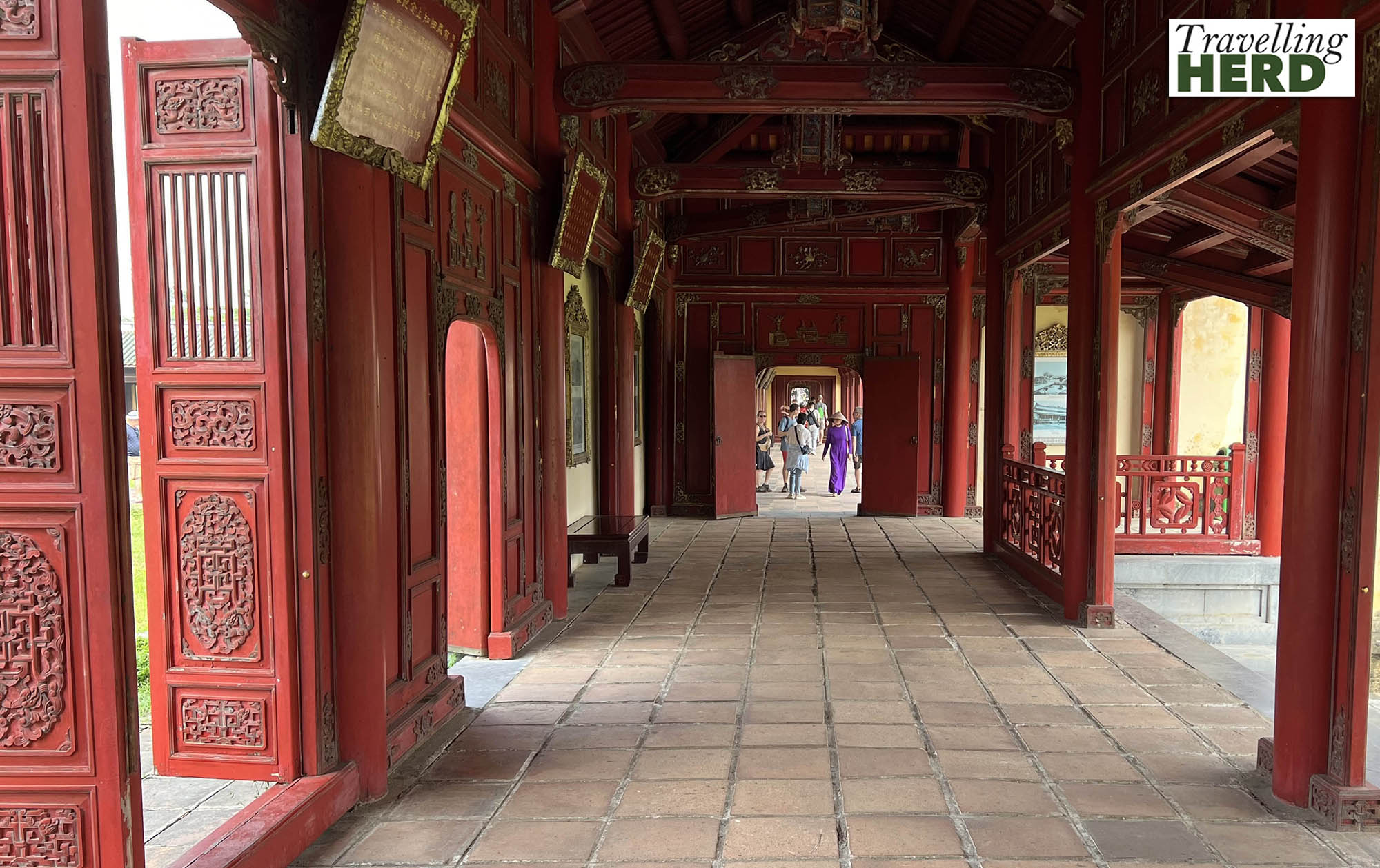
Inside the Citadel or Kinh thành is the walled Imperial City or Hoàng thành and within the city there lies the Forbidden Purple City or Tử cấm thành with the Kien Trung Palace or Điện Kiến Trung where the last two Nguyễn emperors lived [see feature photo and Selfie of the day].
Although it was largely destroyed in 1947 during the Indochina wars, it was reconstructed between 2019 and 2023 and is now open to the public.

The exterior mixes European [largely Italian Renaissance and French Classicism] with Vietnamese style architecture. The decorative dragons were particularly impressive whether carved in stone . . .
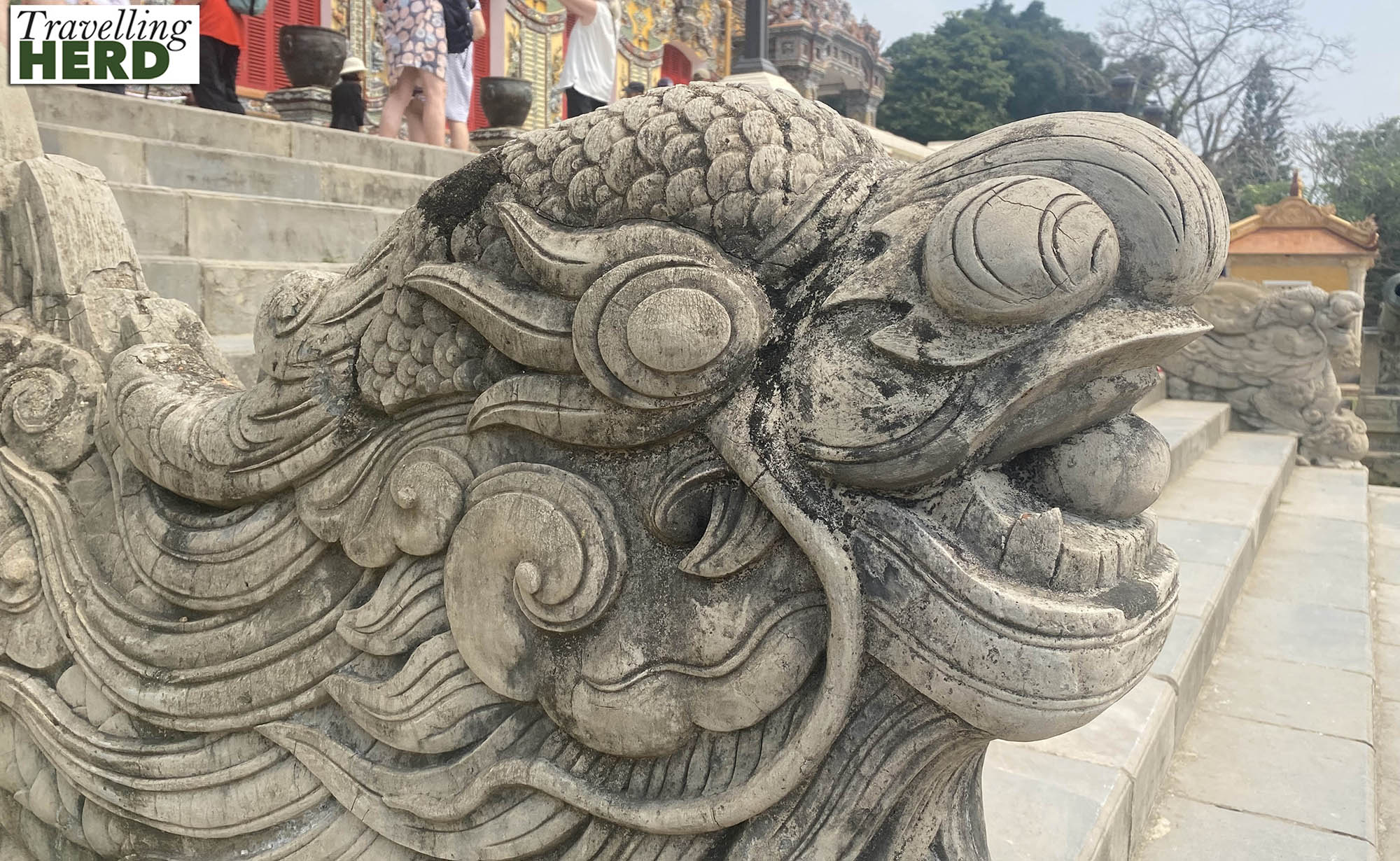
. . . or, richly decorated with ceramics, like the whole facade of the building.
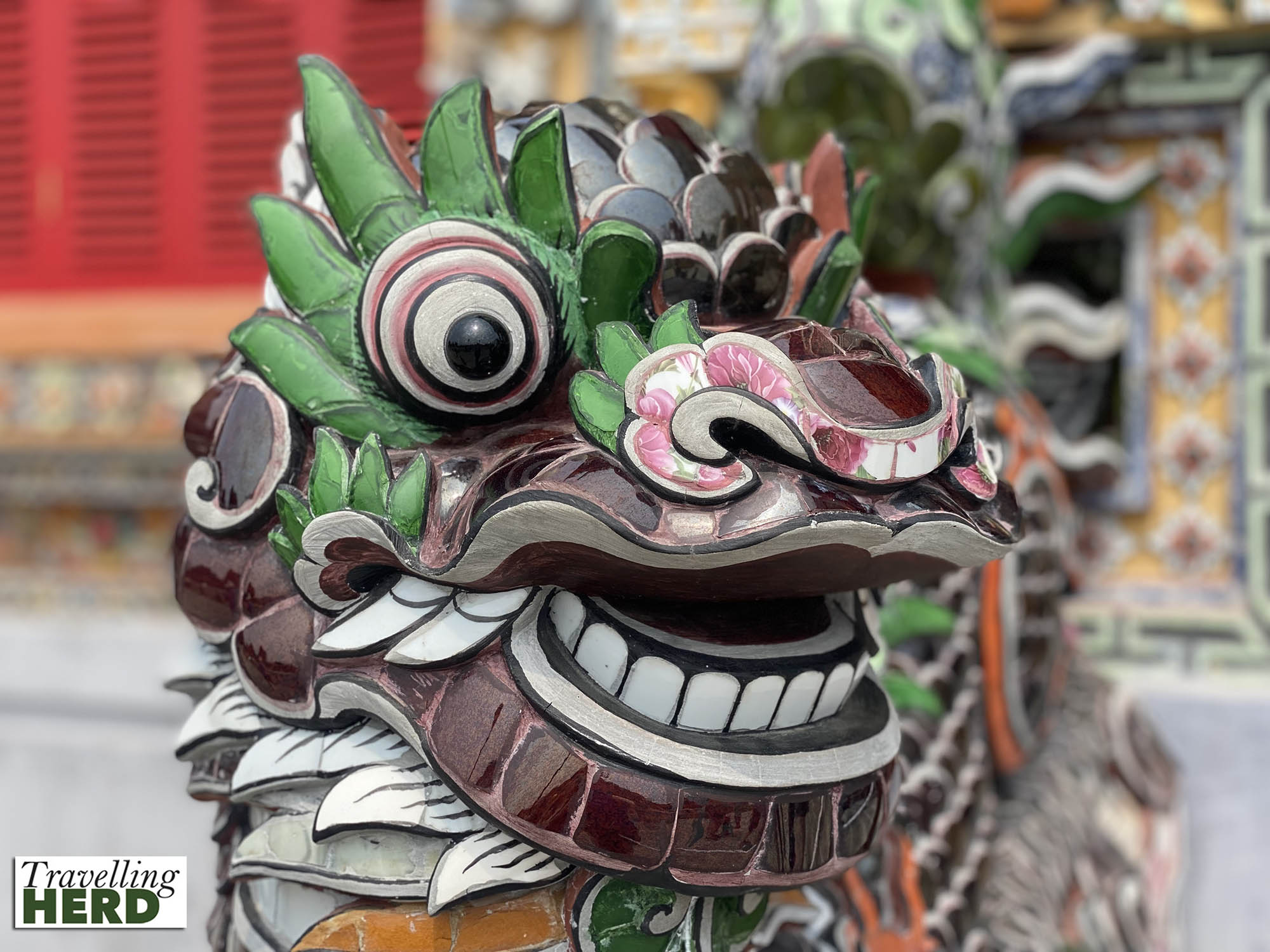
The view from the terrace across the formal Art Deco style gardens at Kien Trung Palace indicates how vast this complex is.
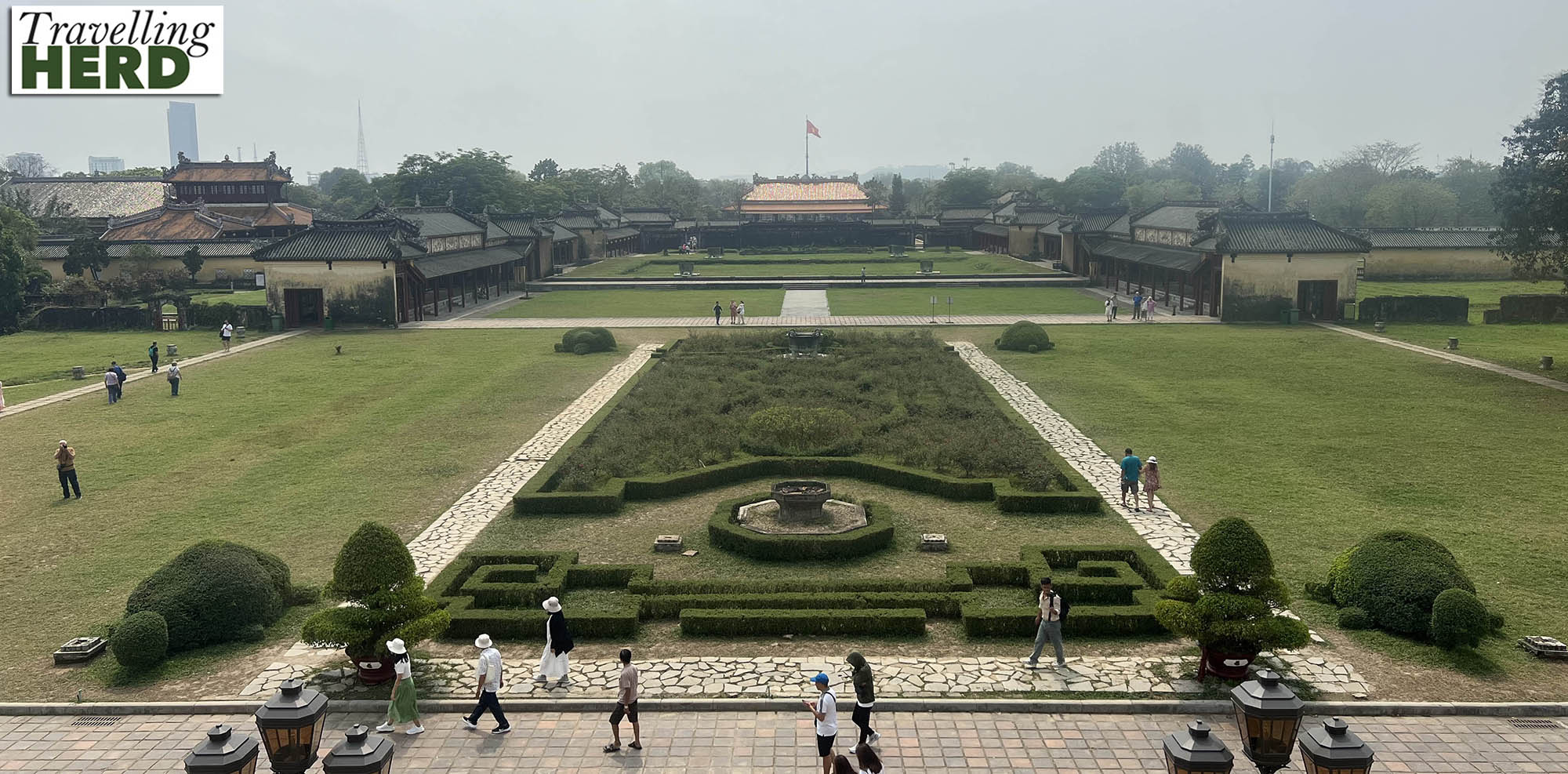
Inside Kien Trung Palace, you could be on another continent altogether. Just as country houses and stately homes in England have Ming vases on display, here there were examples of Royal Doulton in the cabinets.
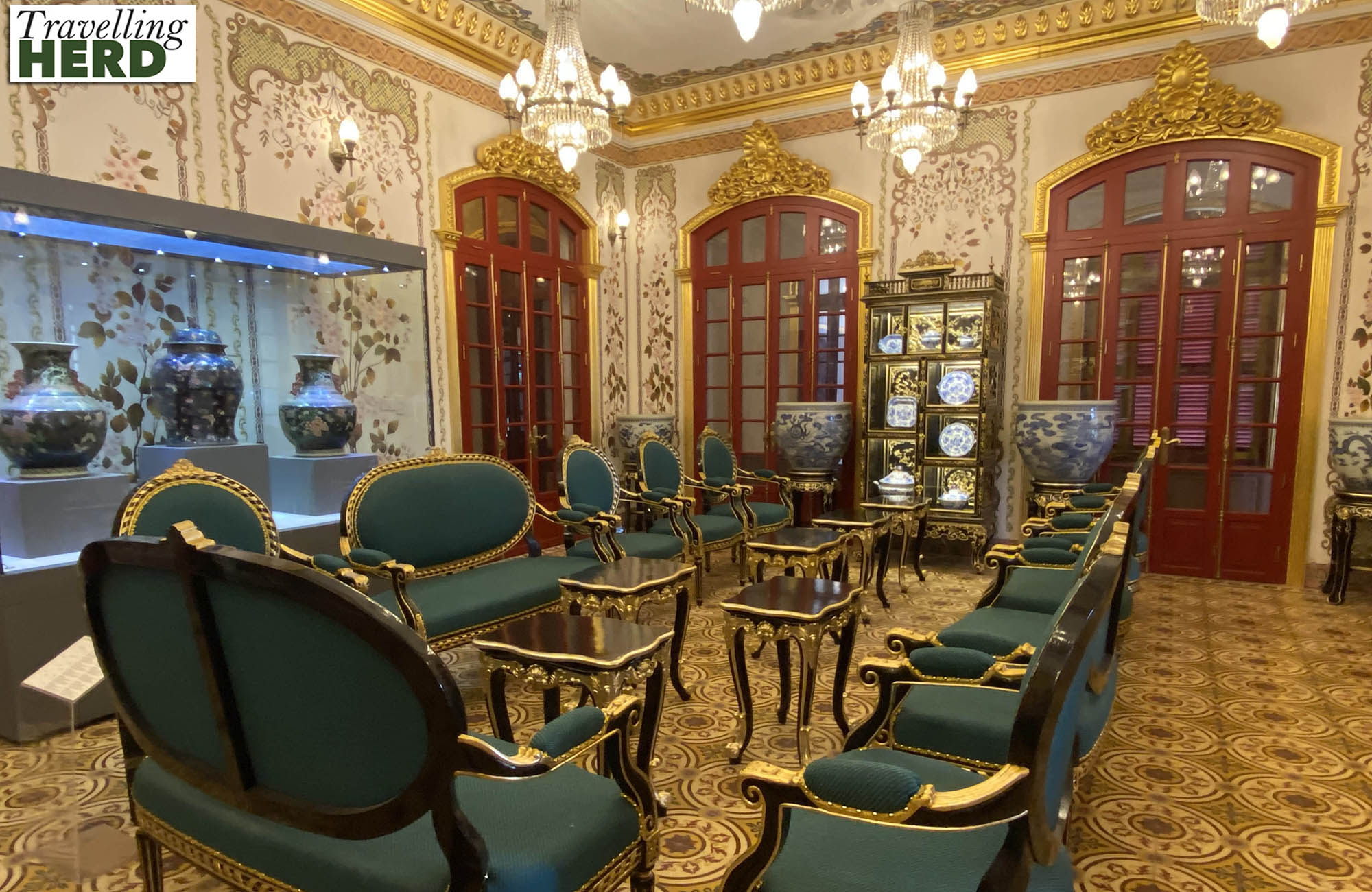
There are several temples and gardens within the citadel and as we walked through, the chirping of the crickets started up becoming ever louder, although we could not see them at all. According to our research, only male crickets chirp as a means of attracting females. Judging by the sound they were making, they were feeling very randy!

The Cung Trường Sanh (Grand Queen Mother’s Residence), also rather charmingly known as Longevity Palace, was built in the first year of Emperor’s Minh Mang reign in 1821.
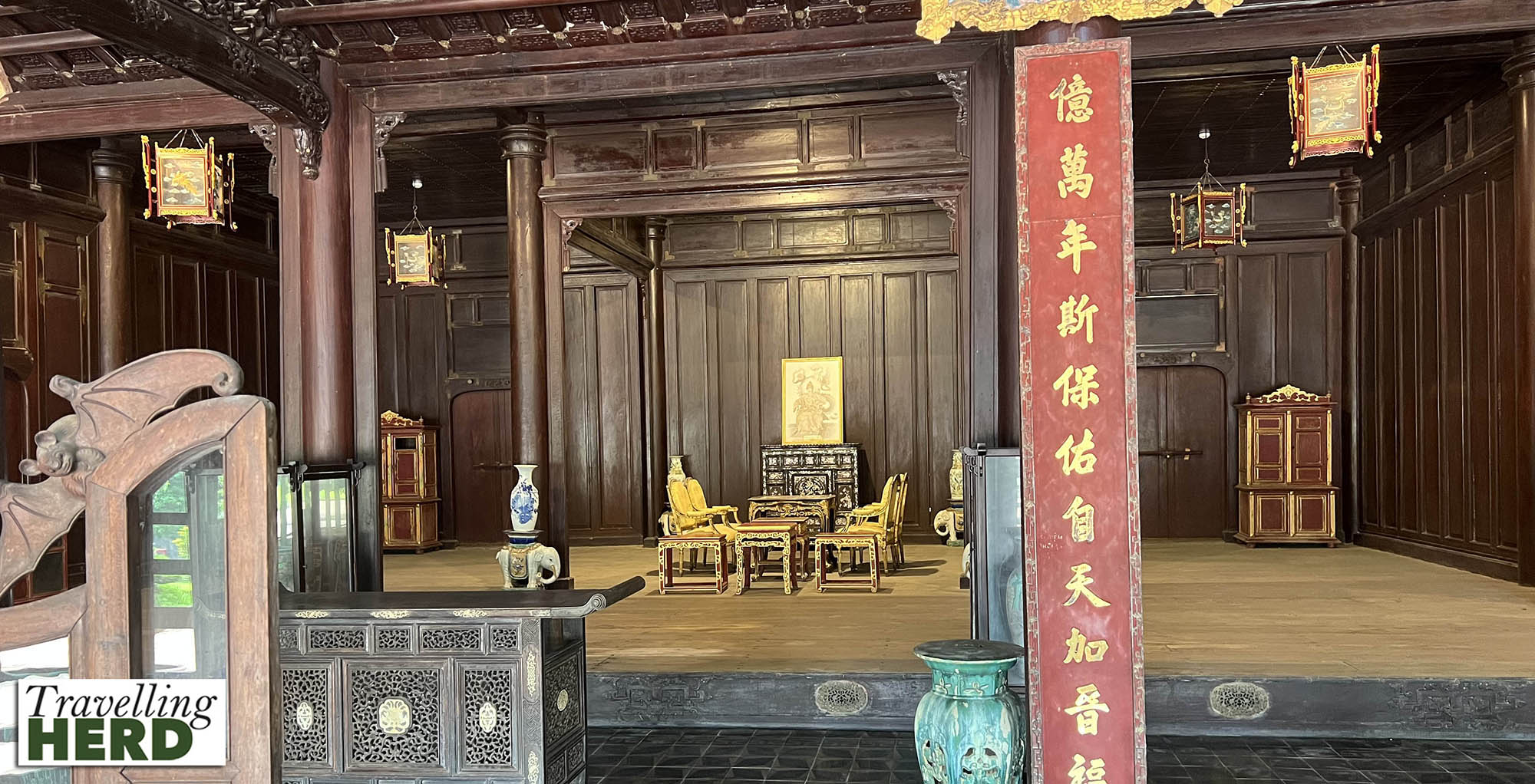
We exited by another very decorative gateway. As we write this blog, we realise that we have not done justice to this incredible historic site. Normally Robert would plan a methodical route through the grid-like layout to ensure we saw everything. However, a combination of lack of sleep on the overnight train and the heat seems to have interfered with this navigational process. We feel we barely scratched the surface and Matilda is suggesting that it means we will need to return to Vietnam.

Having exited the Citadel, we crossed the Hương River. . .

. . . to the Phủ Cam Cathedral which stands on a hill where there used to be an orange plantation. Construction began in 1963 and took 40 years to complete with additional works undertaken in 2000. It was designed in the modernist style by Ngô Viết Thụ and some say that the entrance way looks like the open mouth of a dragon.
Inside, the structure of the columns reminded Robert of some of the Gaudí buildings we have visited in Barcelona, as they are particularly curvaceous and aesthetically pleasing. Our research confirmed that these are parabolic arches which are strong even when made out of light materials such as brick or tile and are a feature of Gaudi’s architecture.
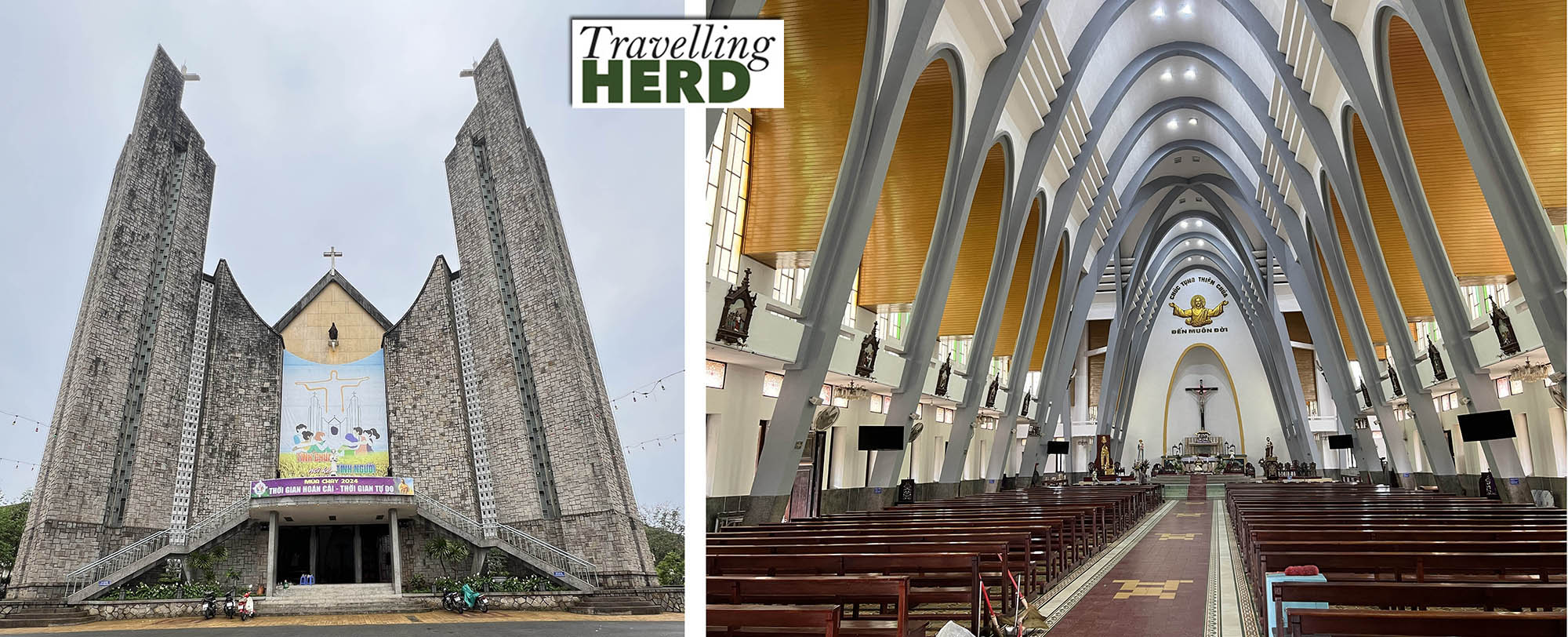
We continued to walk along the banks of the Hương River and past decorations left over from New Year celebrations. Vietnamese New Year was celebrated on Saturday February 10th this year, welcoming in the Year of the Dragon.
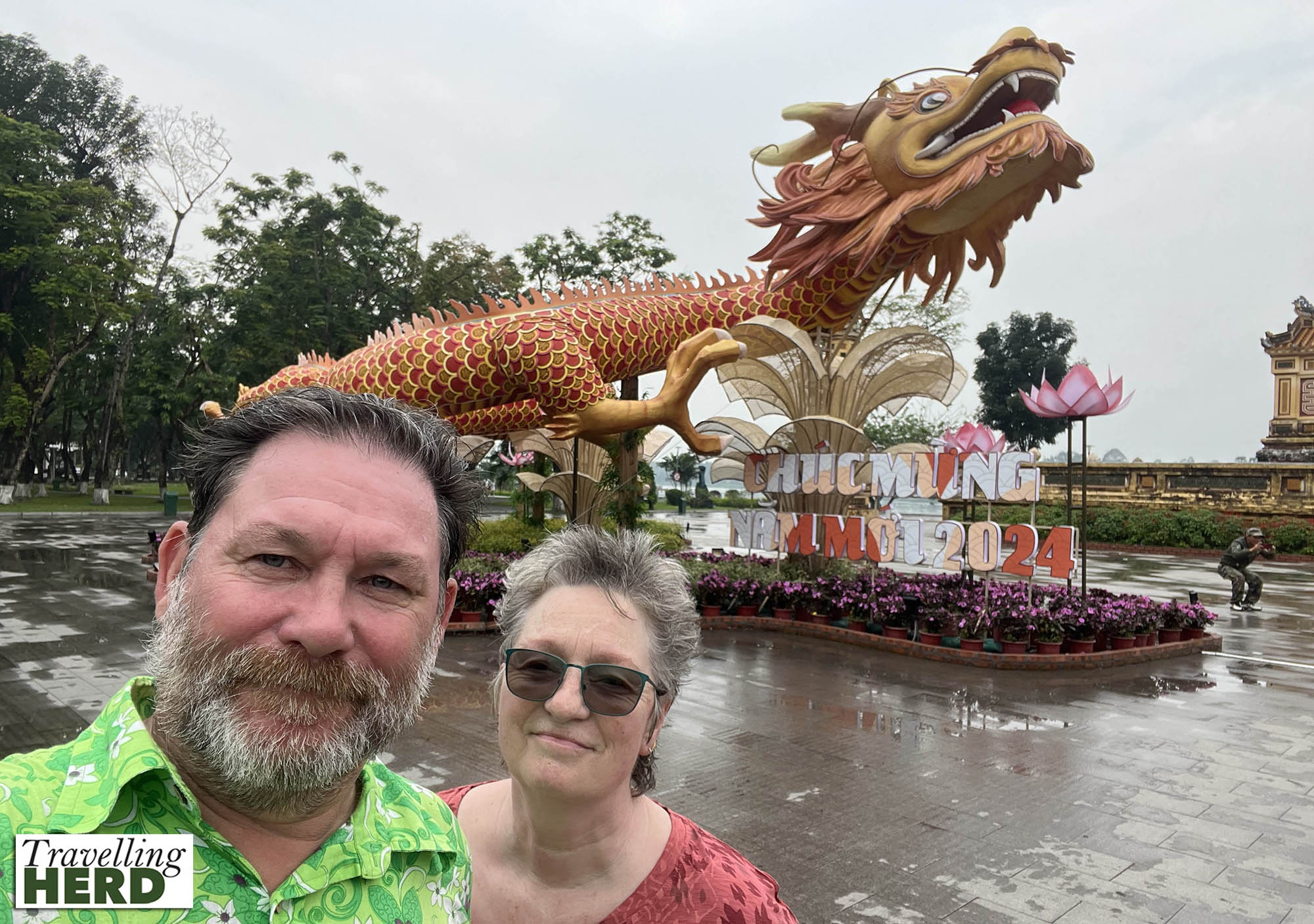
The following day we visited Dong Ba Market. We have noticed that Vietnamese businesses seem to function on the ‘shoe shop’ principle with many shops selling the same item all clustering together. In Hanoi for example we walked down a street which we nicknamed ‘zimmer frame street’ and yet another which was ‘light bulb street’ to us where all the shops were selling the same or similar items. The principle seemed to hold good in Dong Ba Market where one alley seemed to comprise mainly hat shops selling the traditional conical nón lá or leaf hats. Graham Greene rightly described them as ‘limpet hats’. Matilda would have been tempted if she felt there were any chance she could carry it round for the next month and get it back to the UK intact.
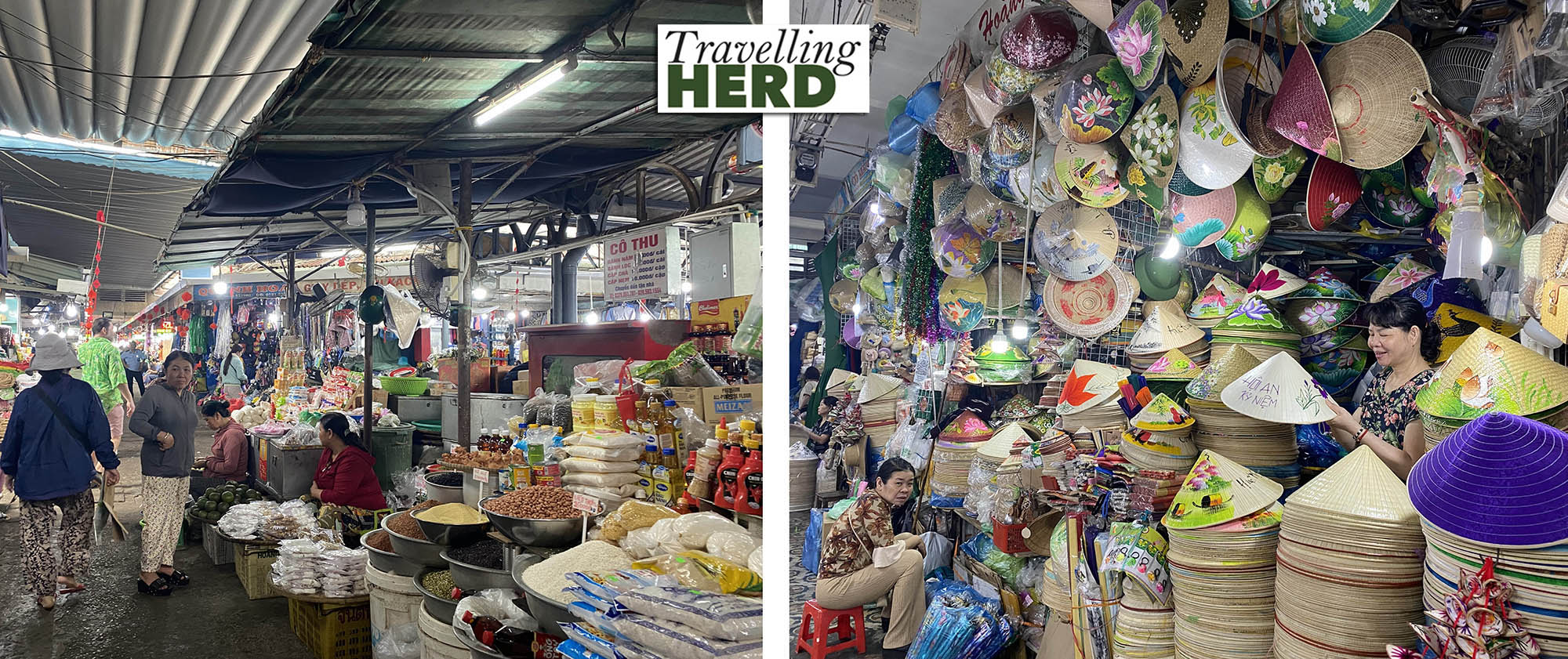
Matilda has a higher culture threshold than Robert but the heat was making us both flag and the cold beer won out over further historical sights. We justified this as we would have an early start the following morning, so needed an early night.
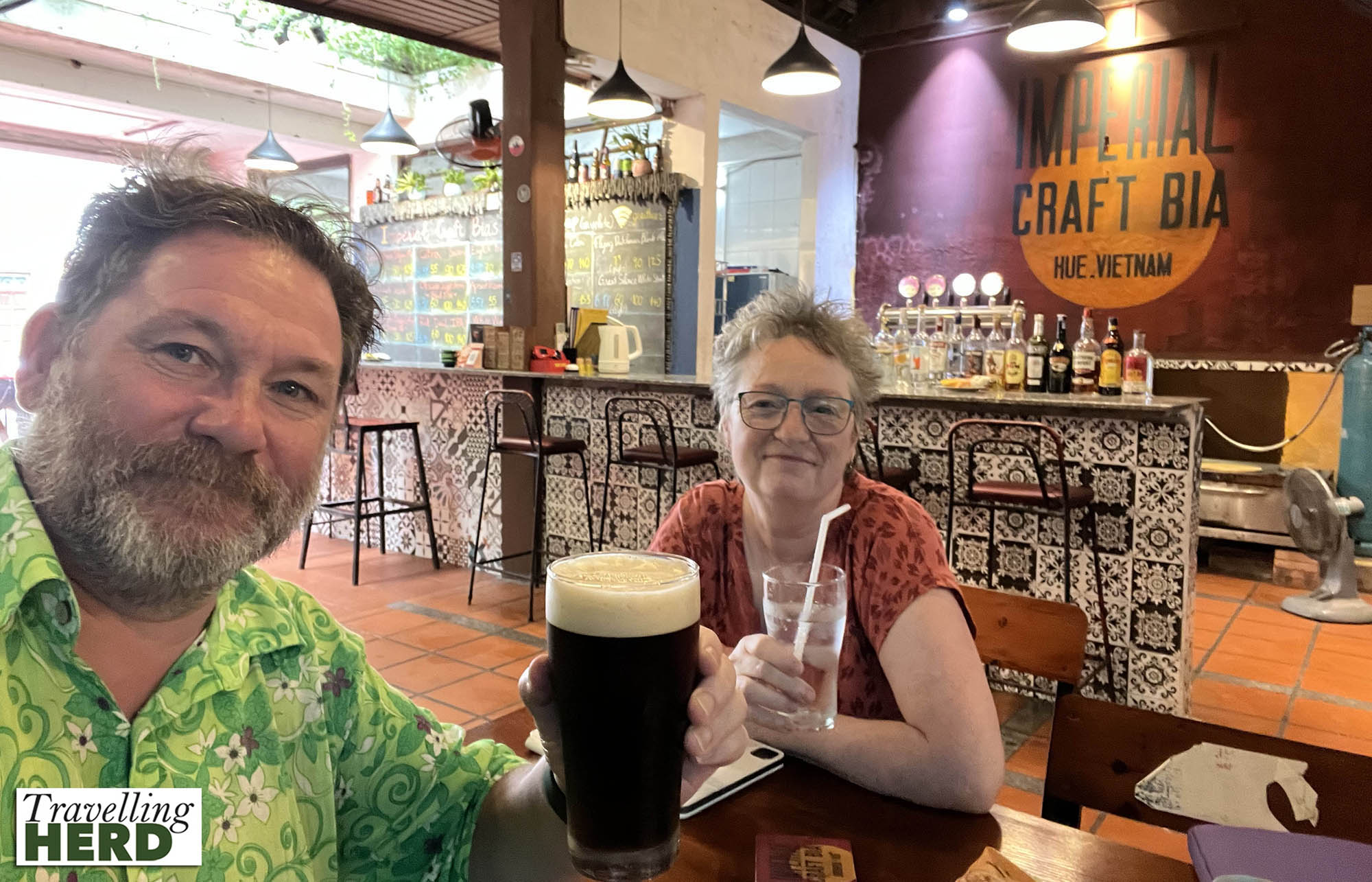
We then found a light snack and headed back to the hotel for a much-needed sleep before a restorative breakfast with a vast array of choices [see Dish of the day].
Selfie of the day:
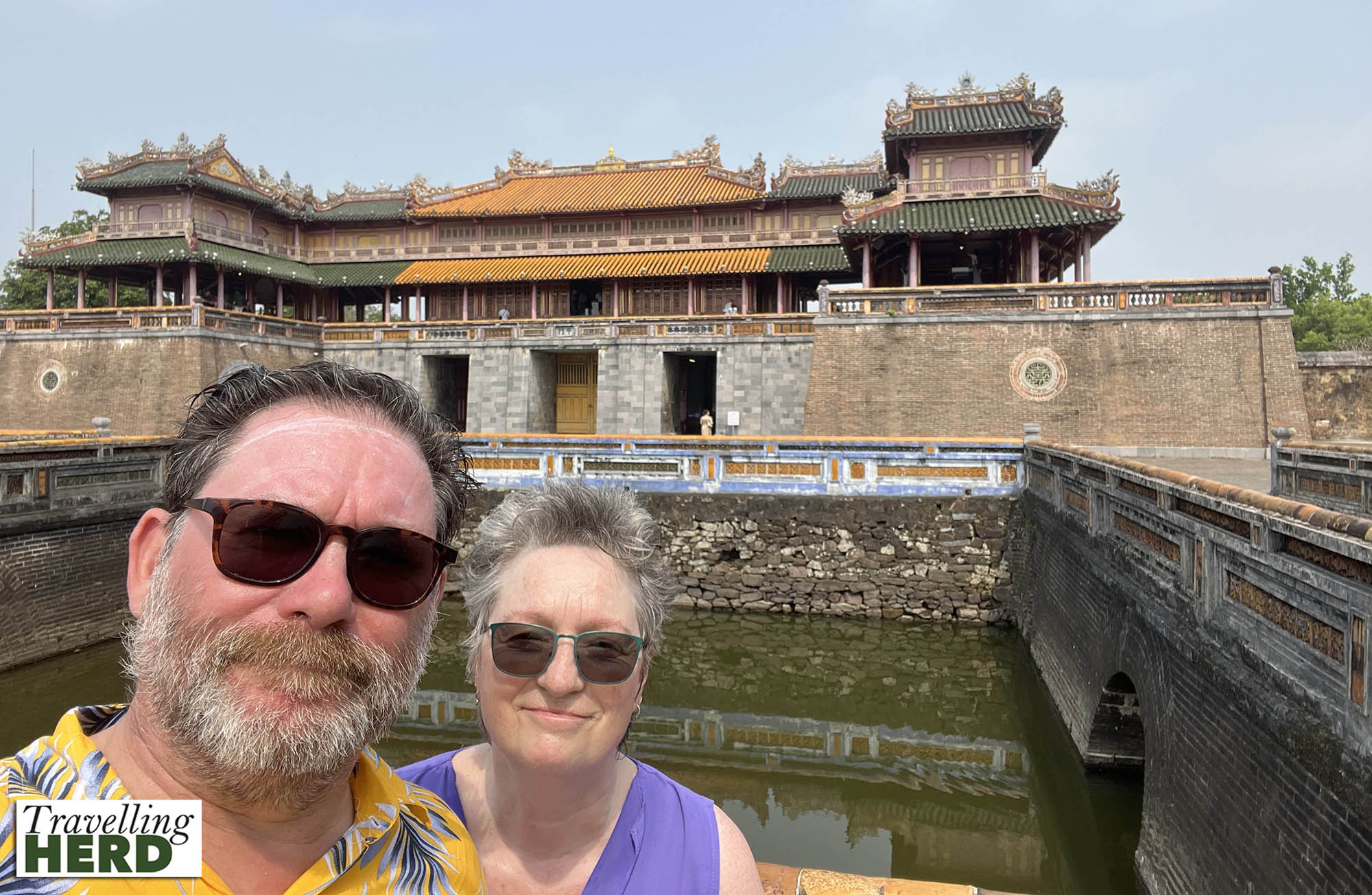
Dish of the day:
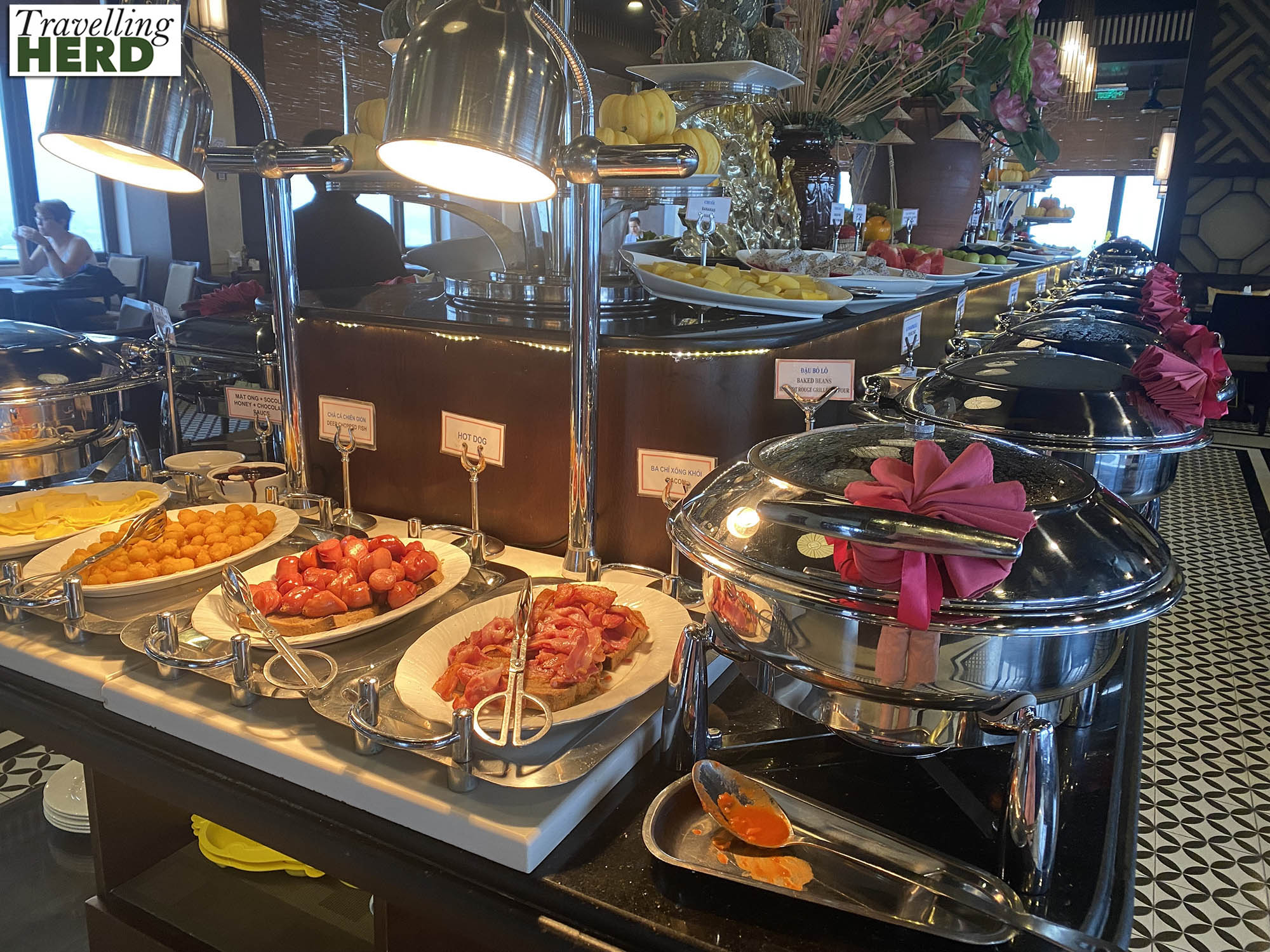
Route Map:
